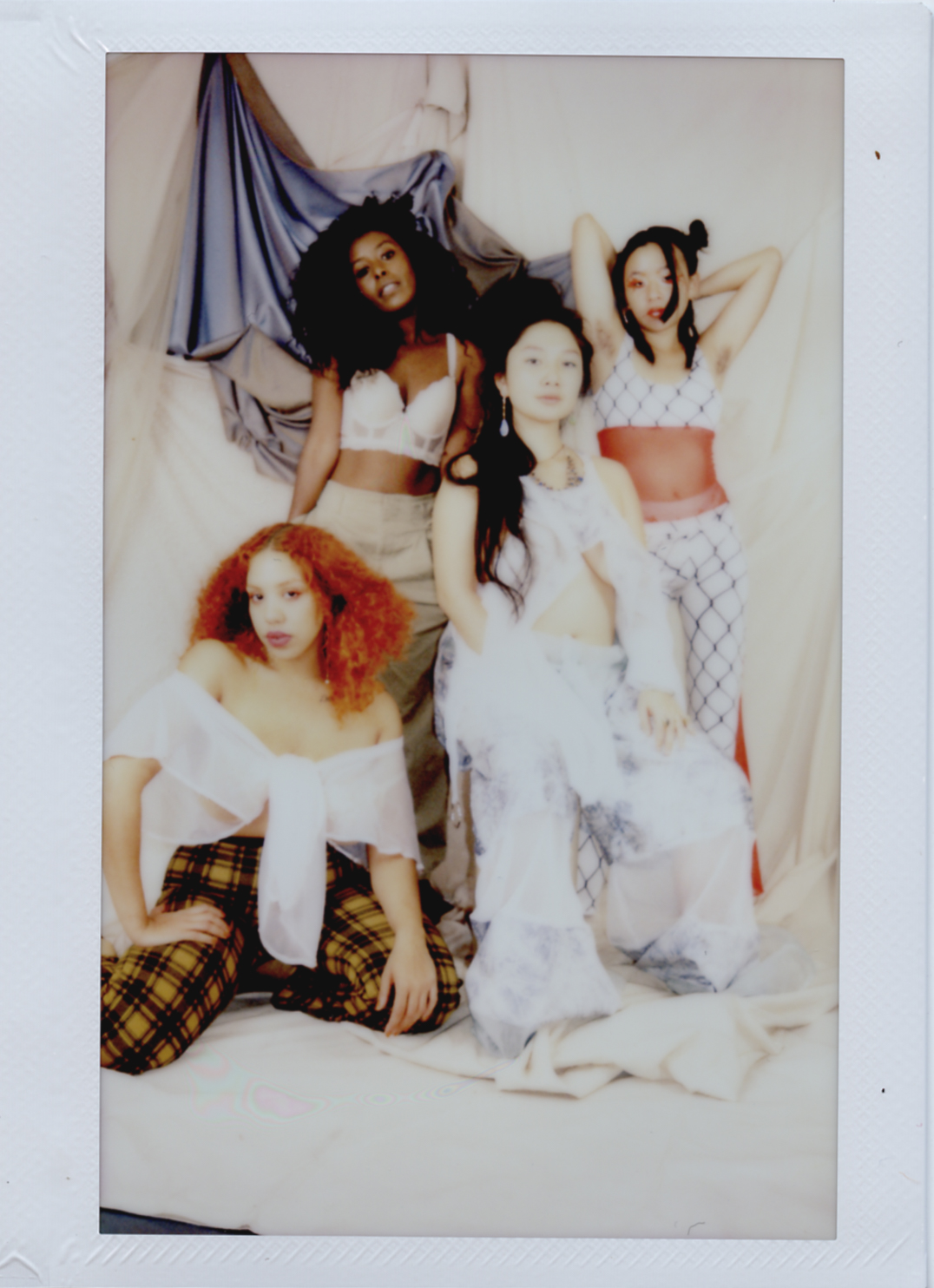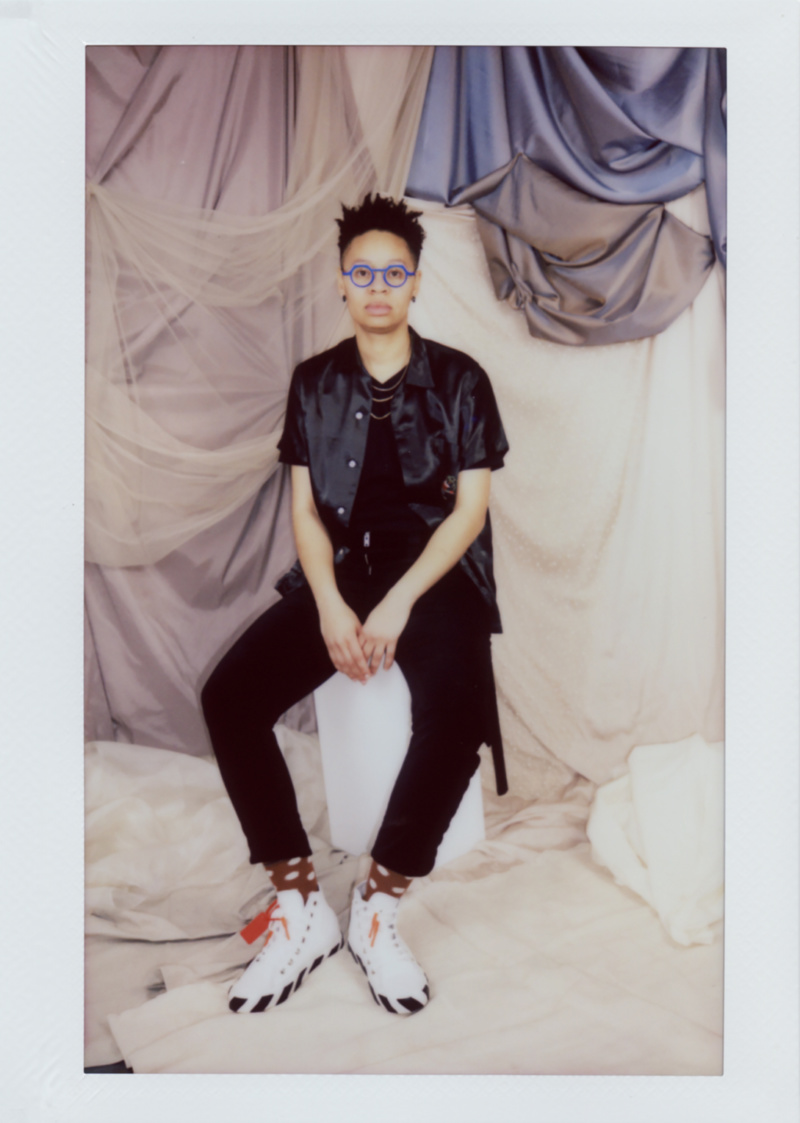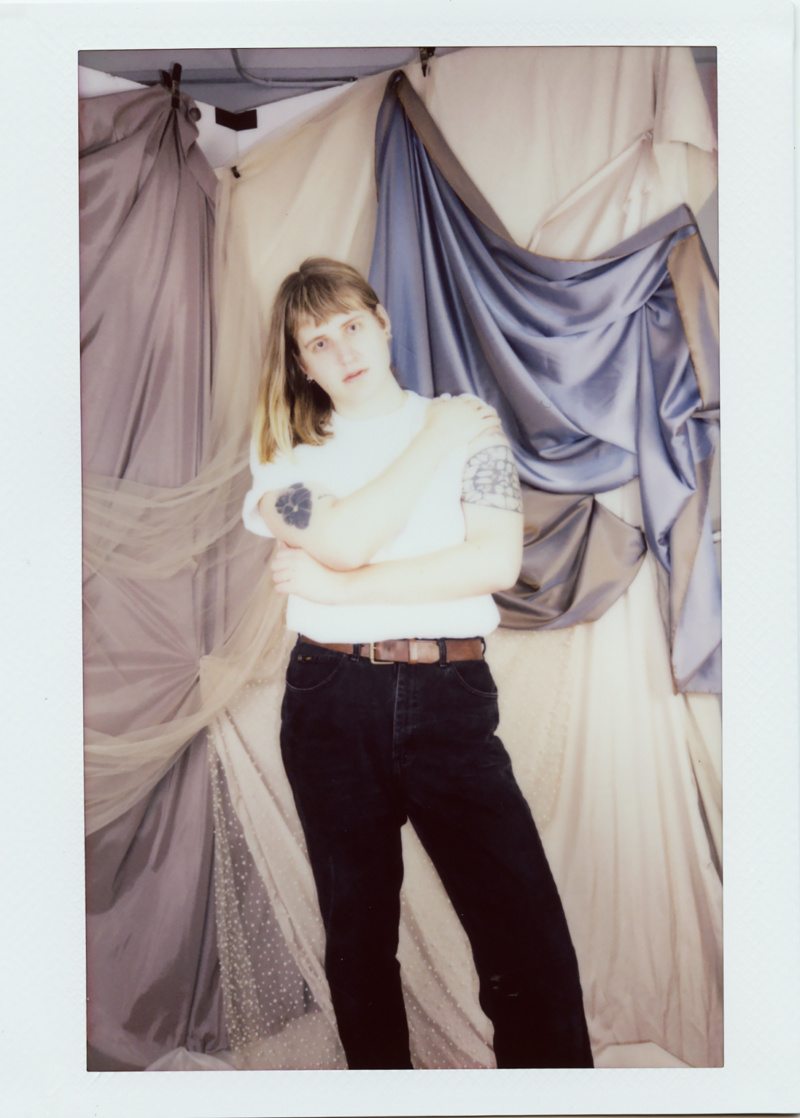
I've had the privilege of working with Naima Green on several shoots, and my takeaway from those experiences has always been: "How does she do it?"
In the span of minutes, Green remakes a room into a safe space, one that the subject can find room for themselves in. Her latest project, Pur-suit, a revision of Catherine Opie's Dyke Deck (ca 1995), takes this to a new level.For the project, she wrangled days worth of one-on-one shoots with queer women, non-binary and trans people who live in New York. Now in the final days of a Kickstarter funding campaign, I spoke with Green about why this project has taken on a life of its own.
The way the Kickstarter was phrased, it sounded like the card set was the foreground for a larger project, a sharing platform for multiple authors. I was wondering if Pur·suit was a way to fundraise for this larger engine, or if Pur·suit led you to see the need for a larger engine. My original intention was to make a deck of cards. The project shifted when I began making the portraits, listening to stories, connecting to people, couples, and collectives. I didn’t want the work to end at the level of the object and saw clearly that the cards were one entry point, and that there was a need for more entry points, sounds, and touches that allow folks to be the authors of their own stories.
I’ve seen you work on set, but for those who are not as familiar: how do you create the intimacy one sees in your photos in the short window of a sitting? I’m best one-on-one. My process is simple: I talk to people, I ask questions, I try to be generous, I look, I tilt my head, I move if the sun moves.

What was the casting process like for Pur·suit? What percentage of the subjects were strangers, rather than friends or acquaintances? I knew 58% of the sitters at the start of this project. The casting was a mix of friends, former lovers, recommendations, babes I had crushes on, and incredible strangers who found me through the open call.
How did making this deck affect your own work going forward? What are your takeaways from the project and its continuity? I’ve never made anything at this scale and been so public about it. It’s humbling, it’s scary, it’s exhilarating. I’m grateful for the ability to work with a supportive team. Prior to this project, out of both necessity and stubbornness, I tried to do everything myself—having help on set, having collaborators and tapping people who have the expertise to make the project stronger makes everything better.

I’m entranced by this idea of the missing data set and how it shows the lopsidedness of reason when one only looks at what is there, but doesn’t take into account what is not there. How can we all turn on this part of our brain? What are your methods for looking? A lot of my work operates from a place of wanting to see what's unseen. One of my long-term projects, “Jewels from the Hinterland,” began because I was interested in mapping lush urban sites as places for black interiority, quiet, and refuge—they are never pictured as such. When I started making that work in 2012 the furthest thing from my mind was naming it as a missing dataset. Mimi Onuoha’s work and writing allow me to go deeper into my own practice, giving me the language to reframe and rethink my own process.
I was wondering if you could speak about playing cards as an alternative distribution method for images. Not every photographer makes a deck. Why was it such an appealing medium? Was it solely Catherine Opie’s? I’ve had a relationship with tarot for years. I think about cards, both playing and tarot, as objects that can live in and between worlds; both ordinary and magical, they collapse a fundamental binary, which is why they’re the perfect medium for making visible a community that is often obscured on account of its refusal to adhere to binaries of all kinds.
How is Mexico City? Can I come live with you? New York is freezing. This is my first time living outside of New York in 20 years. I’m experiencing a lot of growing pains, joy, tacos, and sun—come!
To purchase a deck from the first batch, go to Green's Kickstarter campaign here.



